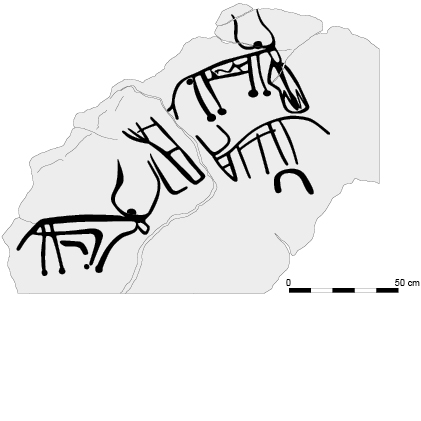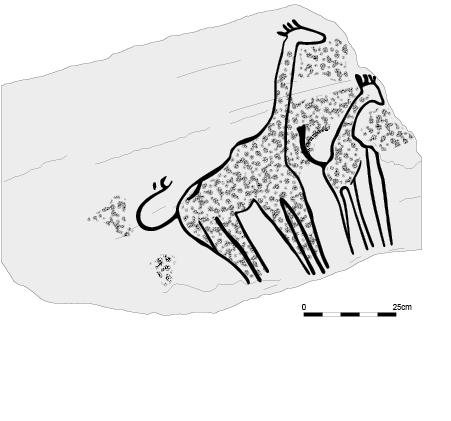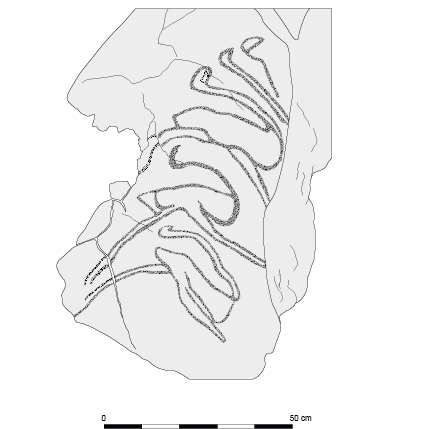The Society for Libyan Studies: Rock Art monograph
2016
My largest project to date, I was approached by the Society of Libyan Studies to produce well over a hundred illustrations of carved rock art from the Wadi al-Ajal to be included within a monograph.
In order to produce the illustrations I worked from photographs of the carvings alongside field notes taken at the time. I was required to develop a series of meaningful conventions to represent different types of rock carving that included both heavy and light pecking, incision, and polishing. Many of the images were complex, consisting of overlaid carvings that required a great deal of concentration to decipher, particularly in circumstances where the photograph was poorly lit. I liaised closely with the project leader, Dr Tertia Barnett, (School of History, Classics and Archaeology, Edinburgh University), and oversaw several rounds of detailed edits.
I also produced topographical maps that placed the study area in context. In addition, I advised on the use of QGIS to produce distribution maps of the rock art.
“As an archaeologist involved in academic research, I recently required the services of a competent illustrator to produce a large number of drawings for a book on North African rock art. For a publication on rock art, the accuracy and clarity of the illustrations are crucial, and the illustrator’s role is very important. The work presented a number of challenges, which demanded exceptional observational skills and an ability to intelligently interpret often ambiguous visual imagery in order to create digital reproductions of complex rock engravings. In addition to the drawings, Tom assisted me in setting up a Geographical Information System (GIS) programme for analysing my research data, and in developing a series of spatial distribution maps based on these analyses.
Throughout the project, Tom has showed outstanding dedication and professional capacity. He has approached the various challenges of the work with patience and intelligence, enabling him to deal effortlessly with a large volume of material and manage his own time effectively. He has taken the initiative for devising appropriate solutions to specific issues and, through his attention to detail and interest in the material, he has offered valuable new ideas for interpreting and presenting the rock art. As a result of Tom’s input, the book will be beautifully illustrated, and make a significant contribution to other researchers in this field.”
Dr Tertia Barnett
School of History, Classics and Archaeology
Edinburgh University
Click here for the Feature Archive






